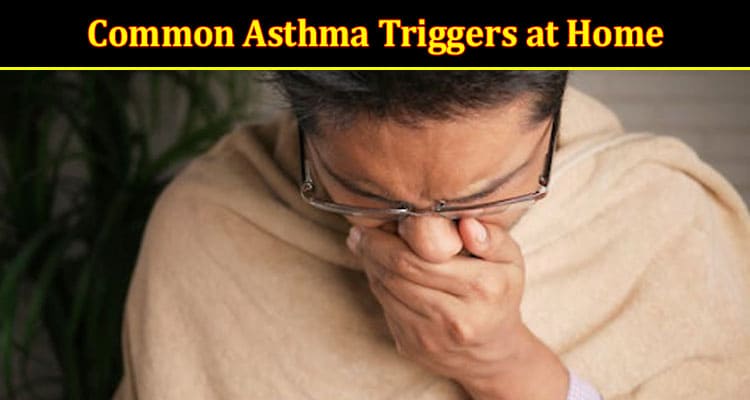Asthma is a prevalent chronic condition that affects the airways in the lungs. In the US, over 27 million people suffer from asthma, equivalent to approximately 1 in 12 people.
Individuals with asthma experience a heightened reaction to allergens. These are substances that cause allergic reactions and trigger asthma. But triggers can differ from one person to another, meaning what affects other people may not have the same effect on you.
Regardless, exposure to asthma triggers can cause an attack. Statistics reveal that 50 percent of people with asthma experience at least one asthma attack yearly. Signs and symptoms of asthma can flare up in certain situations.
That’s why knowing what causes and exacerbates your asthma symptoms is essential so you can take proactive measures to limit exposure to them. In this article, we examine the asthma triggers commonly present at home and how to reduce them.
Indoor Allergens
Allergies and asthma typically occur together with almost the same symptoms. Allergens, the same substances that trigger allergic reactions, may also cause an asthma attack in others.
When the immune system’s response to an allergen results in asthma symptoms, the condition is referred to as allergic asthma.
If you have allergic asthma, the muscles around your airways tighten, making it more difficult for you to breathe. Other symptoms may include coughing, stuffy nose, wheezing, rashes, and itchy eyes.
Nasal sprays can help control and prevent these asthma symptoms. However, since the brand counterpart can be expensive, many patients need to use a BuzzRx fluticasone coupon for the generic medication and save significantly on their prescriptions.
But to get your asthma symptoms under control, reducing exposure to allergens is as crucial as taking such medications as prescribed. Below are common sources of allergens that may trigger an allergy-induced asthma attack.
Dust Mite Allergens
These allergens can induce mild to severe allergic symptoms. They may also be responsible for triggering asthma attacks in some individuals, particularly those who exhibit sensitivity to dust mites.
These allergens are small to see and accumulate quickly in dust or fabrics. Sources and nests of these allergens are often bedding, mattresses, carpets, and upholstered furniture.
Mold Allergens
A mold is a form of fungus that produces airborne spores. Inhaling these spores can trigger allergic reactions and asthma attacks in some people. The small size of mold spores enables them to pass more easily into the lower airways, where they can cause an asthma attack. While mold can grow almost anywhere, all indoor spaces are susceptible to these allergens.
Animal Allergens
Animals can induce airway inflammation in individuals who are allergic. They can also aggravate asthma symptoms if you’re allergic to them. Symptoms usually manifest within minutes upon short-term exposure. However, for those with chronic exposure, symptoms may be less severe and develop more persistently.
Specific animal allergen sources are dander or skin flakes, dried saliva, and urine. These allergens are often stuck to the pets’ hair and skin. Hence, they can remain airborne, mainly when the pet sheds hair.
Consider using an allergen-proof mattress and pillowcase covers to prevent asthma attacks caused by these indoor allergens. They can serve as a barrier between these allergens and yourself. It’s also advisable to wash your bedding once a week and dry it thoroughly. Additionally, vacuum carpets and furniture weekly to reduce exposure to mold and pet allergens.
Secondhand Smoke
An attack can happen in people with asthma when something irritates their airways. Secondsmoke increases mucus production. Hence, when individuals with asthma inhale it, the airways can get inflamed and weaken their respiratory function. This can exacerbate symptoms and trigger an asthma attack.
The symptoms may range from coughing, wheezing, and breathing difficulties. However, they can lead to uncontrollable asthma attacks in children and babies even when breathing a tiny amount of secondhand smoke. This can be a significant problem when a family member at home is a smoker.
The best way to minimize this asthma trigger is to avoid tobacco smoke. Make your home a smoke-free zone. Don’t allow people to smoke near or inside your home as much as possible. If you can, encourage friends or household members to quit smoking.
Strong Odors and Chemicals
Strong odors can pose problems for individuals with asthma. A variety of materials at home, including perfumes, deodorants, air fresheners, and cleaning products, can give off such odors. Closed windows can intensify the scents of these products during the colder months, increasing the risks of an asthma attack.
Consider using cleaning and personal care products free from strong odors and fragrances to reduce exposure to these asthma triggers. You can also ask family members to limit their perfume use. Likewise, ensure that your home has proper ventilation. Open doors and windows to let in fresh air if it’s safe to do so.
Conclusion
Avoiding your asthma triggers is the best way to prevent asthma attacks and reduce reliance on medicines. Regular cleaning and proper ventilation can make a great difference in alleviating your asthma symptoms and improving your quality of life. But it’s also critical to talk with your doctor about managing your asthma triggers and symptoms.

